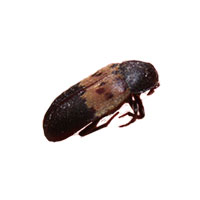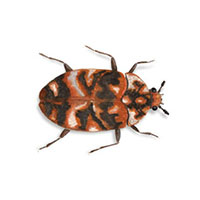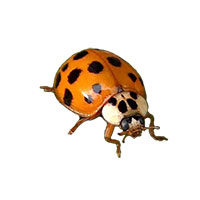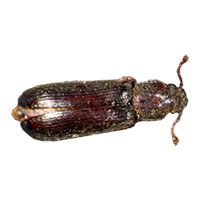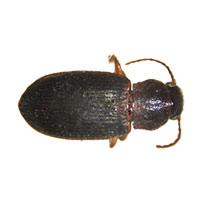Larder Beetles in Wisconsin
The larder beetle is a commercial pest as well as a household pest. True to its name, it is found in stored foods of high protein content.
Larder Beetle Habitat
Larder beetles overwinter as adults in protected places. In the spring, adults are attracted to areas that have suitable food. When larvae are searching for a place to pupate they have a habit of boring into the wood and other hard materials.
Larder Beetle Life Cycle
Through the summer months, females lay more than 100 eggs, which take about two weeks to hatch. The larvae will feed for 40-50 days on high protein food before pupating (transforming) into adult beetles. The pupal stage lasts from three to seven days depending on temperature and moisture conditions. If conditions are ideal, a generation may be completed in 40-50 days.
Signs of a Larder Beetle Infestation
Physically remove and discard any larder beetles that are found. However, if you are continually finding larvae or large numbers of adults, this indicates an infestation is present.
The first step in larder beetle control is to identify and dispose of the beetle’s food source. Without a food source, larder beetles will not survive. If larder beetles and their larvae are found in high numbers or have been a reoccurring problem, a large food source or a renewable food source, such as dead cluster flies or boxelder bugs in the walls, may be the underlying cause. If the food source appears to be within a wall, letting the problem run its course is likely the best solution. Once the larder beetles have exhausted the food source they will disappear. For infestations located in foam insulation, dust or powder-type insecticides are preferred. If a larder beetle infestation occurs, count on professional beetle control experts to take care of the problem knowledgeably and successfully.
Need help with Larder Beetles?
We'll call you! Leave your information below.

